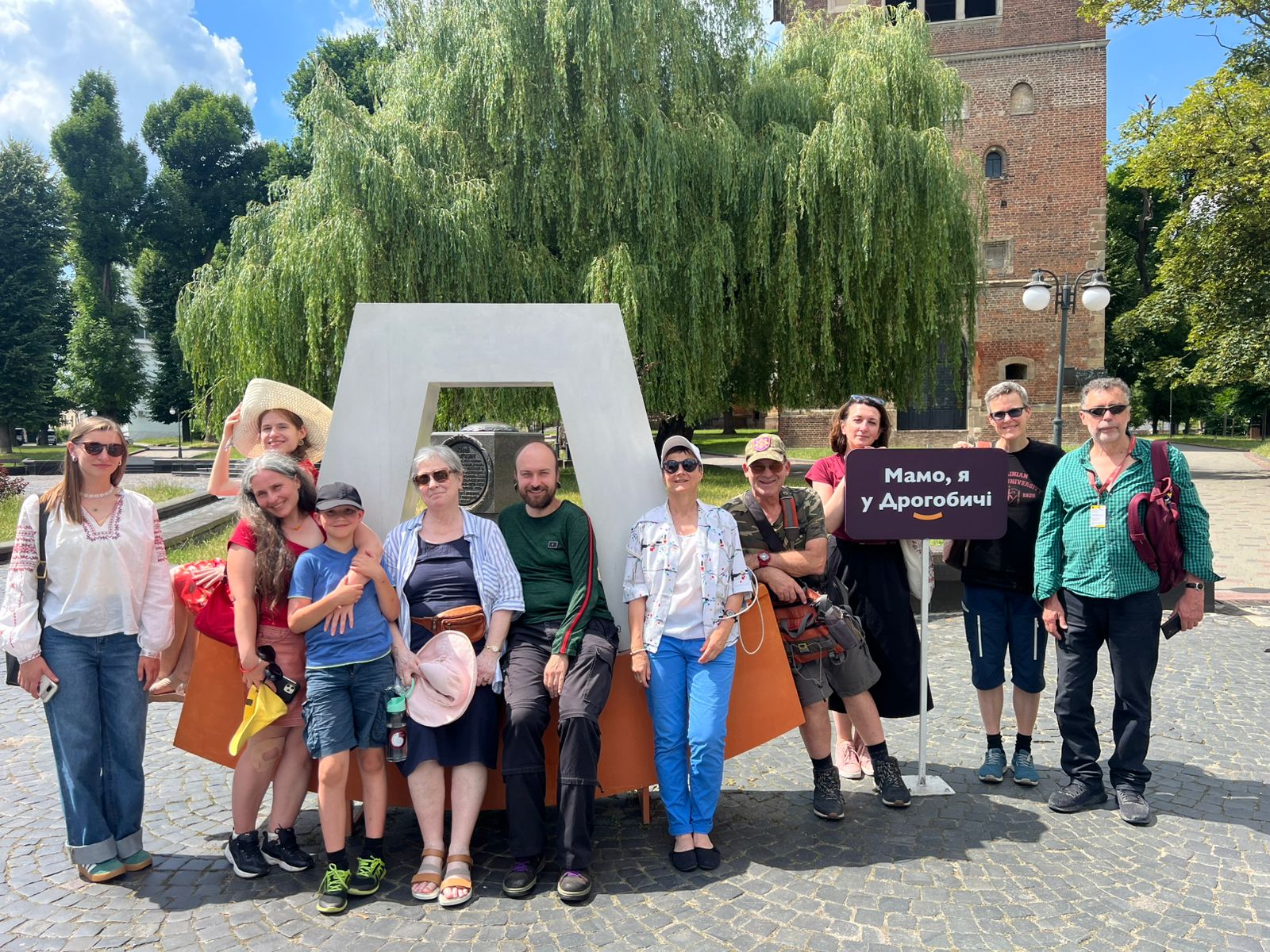We had two days of excursions in the first half of the course, mostly focused on ancient history and the environment. In the second half of the course, we visited various (old) sites with a bit more focus on local industry.
Just like last time, I’m heavily relying on the brochures to explain the sites we visited, rather than describing them in my own words. My mind simply absorbs Ukrainian grammar more easily than historical facts — and Ukrainian grammar is probably the hardest thing I’ve ever learned.
Reconstructed Olesko castle (6 July)
From the brochure (adapted):
This is the oldest building in western Ukraine, and one of the best-known castles that had been reconstructed from ruin. For over six centuries, the castle has been soaring on a 50-meter (164 feet) high hill, protecting memories of crucial historical events that it had witnessed and participated in. Today, a museum occupies the castle, exhibiting unique works of art.
The exact year of the castle’s origin is unknown, but its first historical mention is in 1327. At that time, the fort played a key role in the battles among Lithuania, Poland, and Hungary. The fortress passed into the possession of Prince Yurii, who was invited by boyars to take the Halych-Volyn throne.
The Olesko Castle was located on the border of Volyn and Halitia, which made it strategically important. The castle was destroyed many times. Each time, however, it was restored from its ruins, changing the appearance, structure, and character of its fortifications. Throughout the centuries, the castle had many owners: Volyn magnates, Lithuanian princes, and Polish kings.
We arrived at the castle on a much-too-hot day, but the amazing view made up for it.
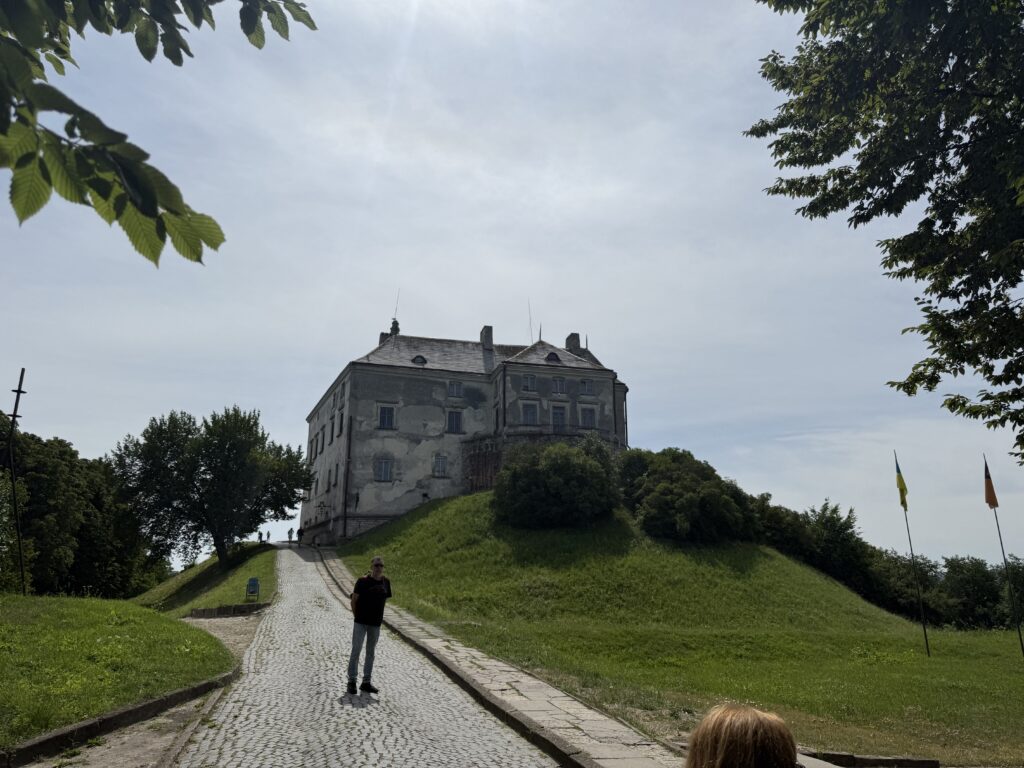
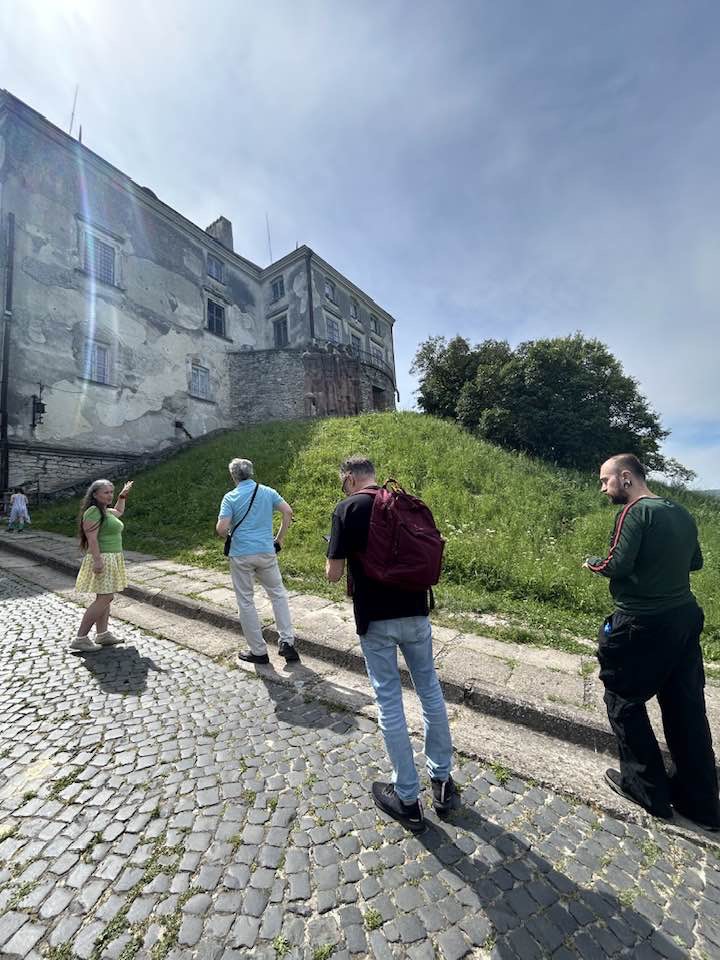
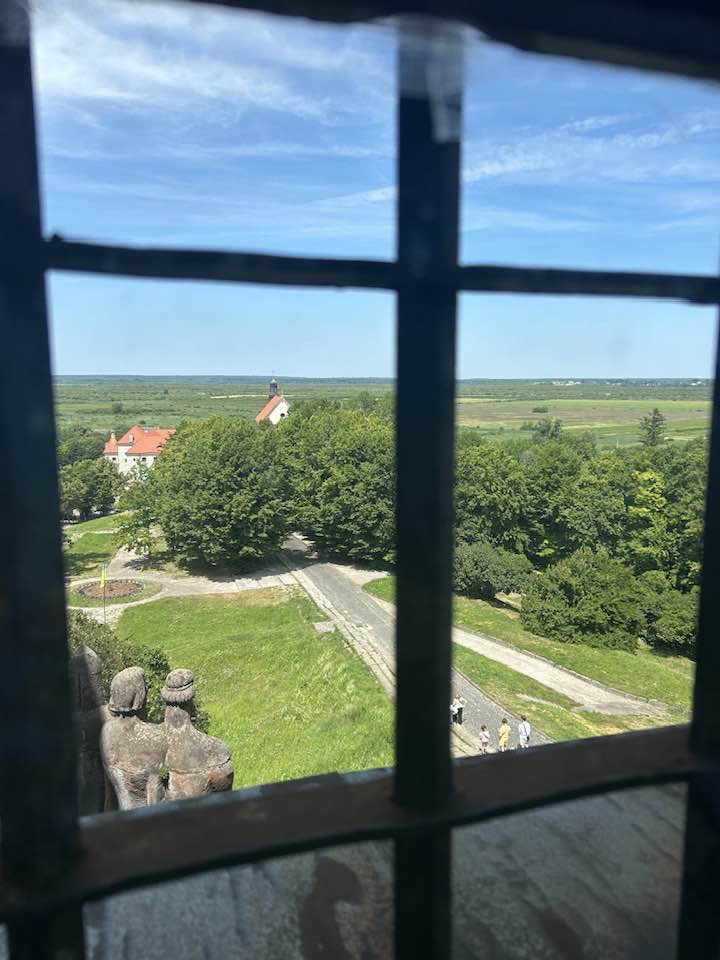
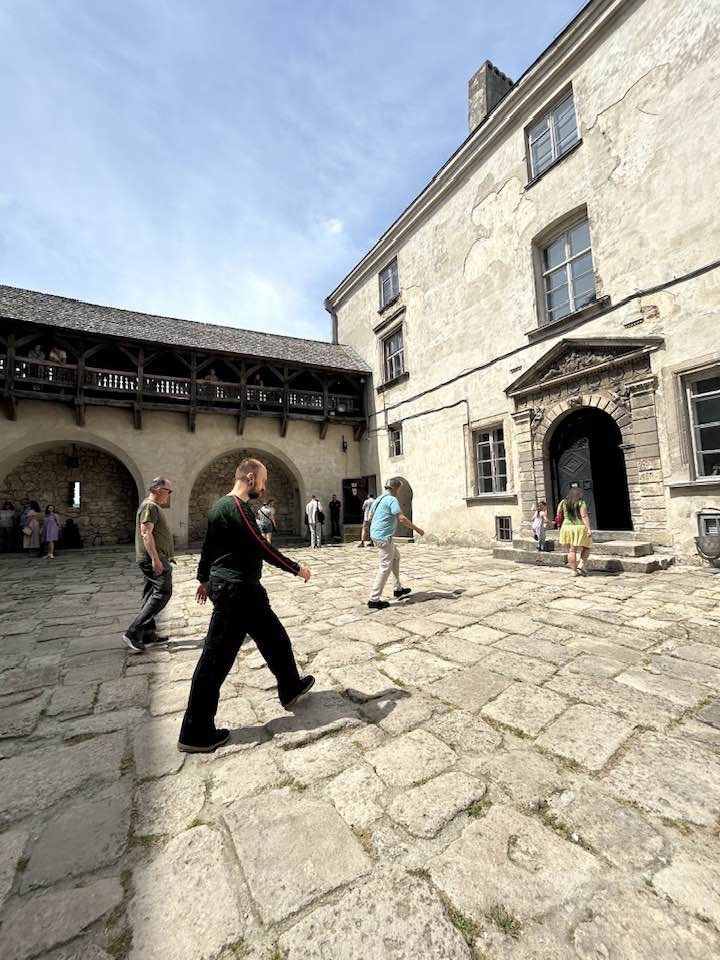
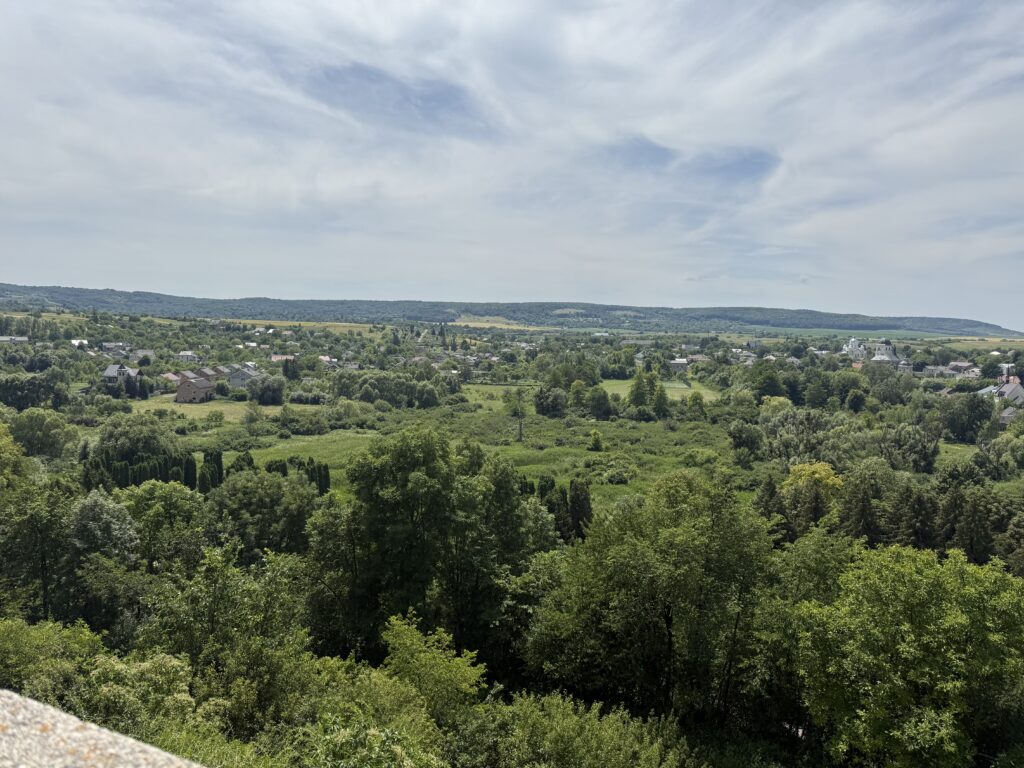
Inside, temperatures were much more acceptable, luckily. There are amazing pieces of art — mostly related to religion.
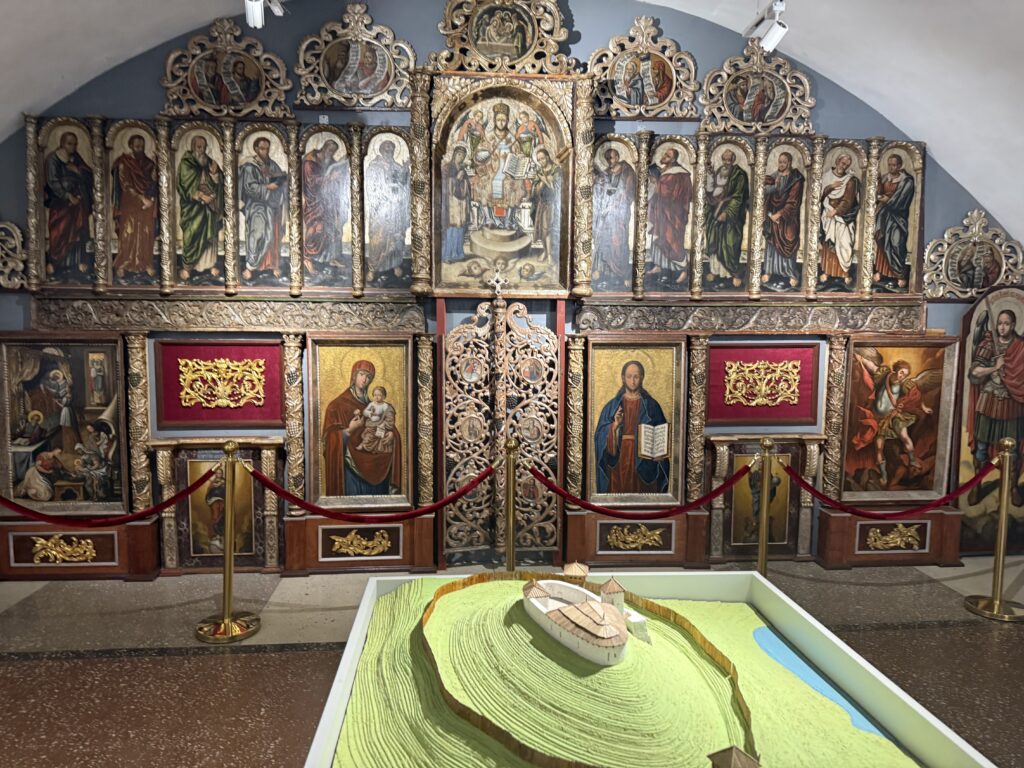
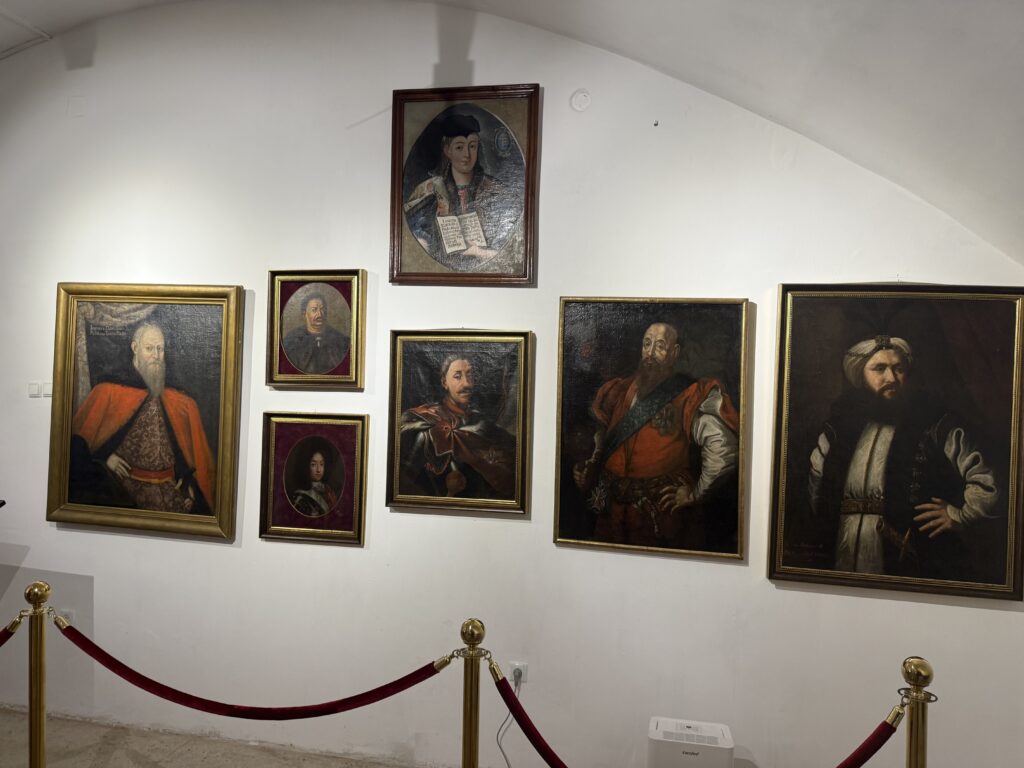
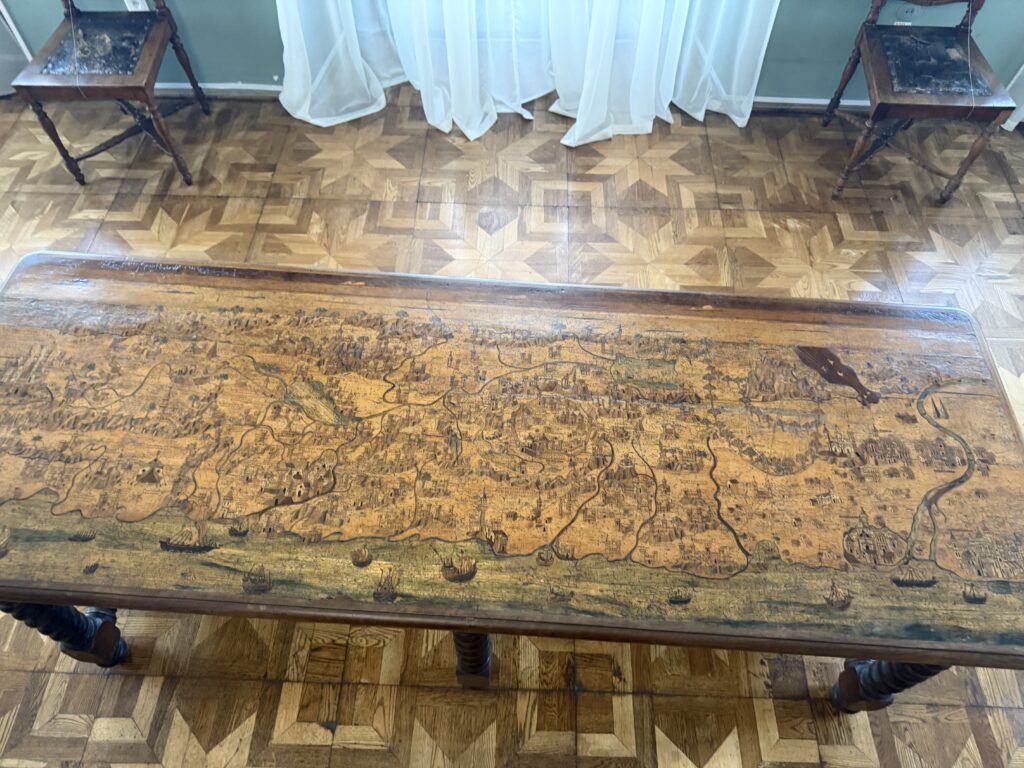
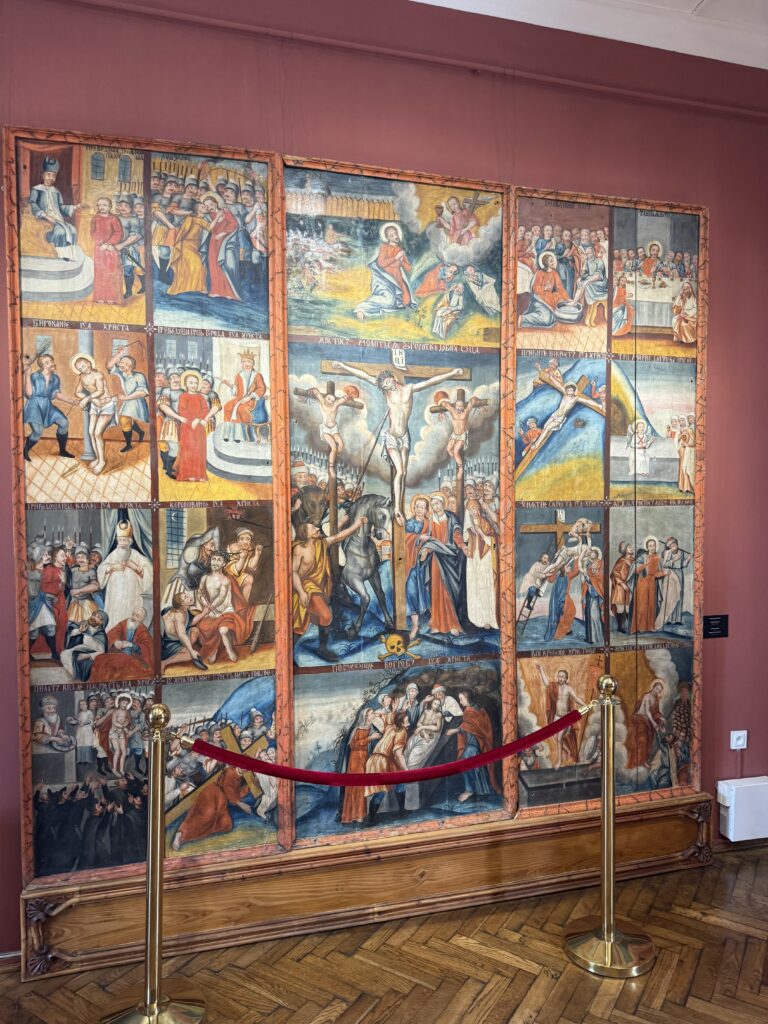

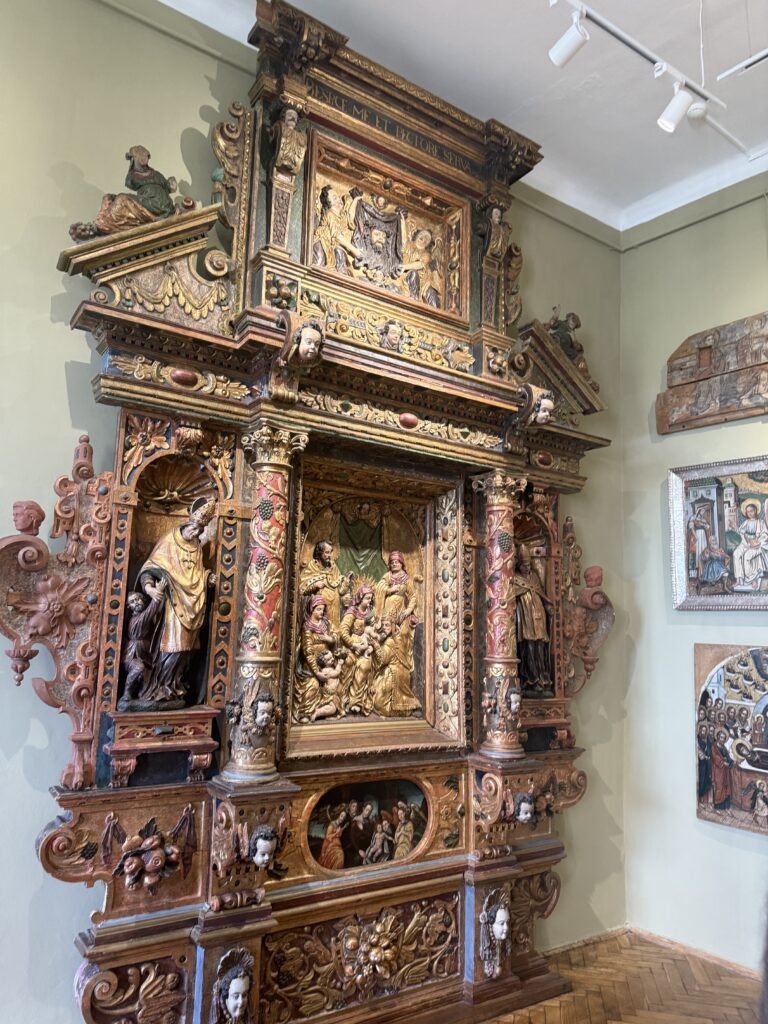

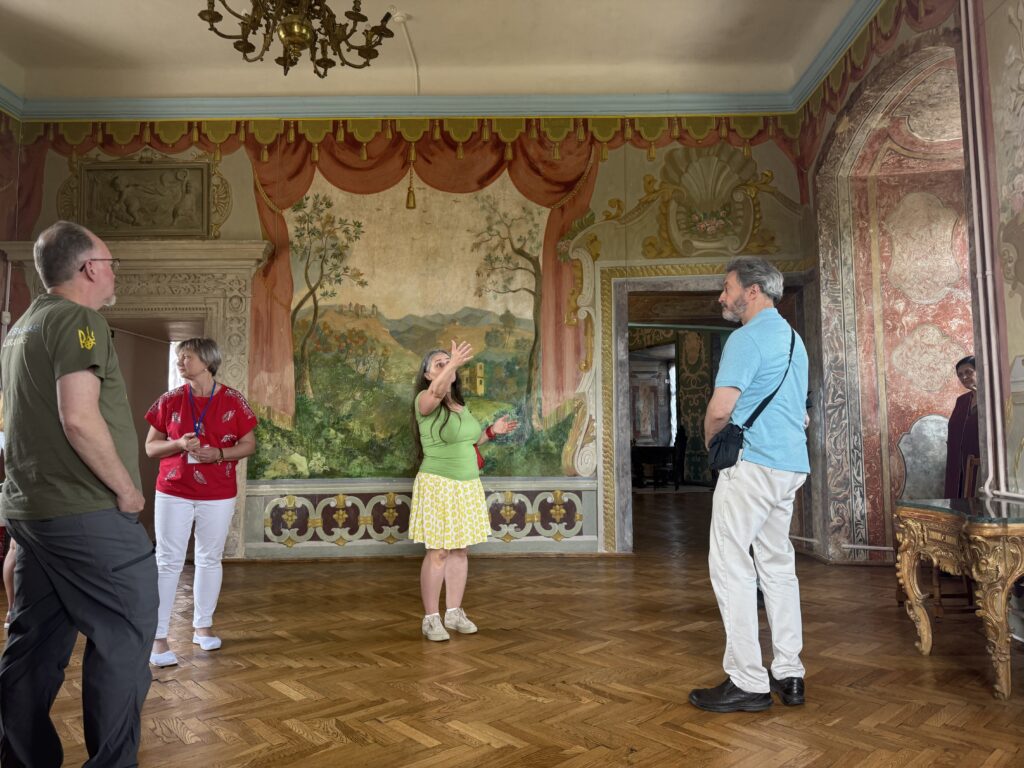
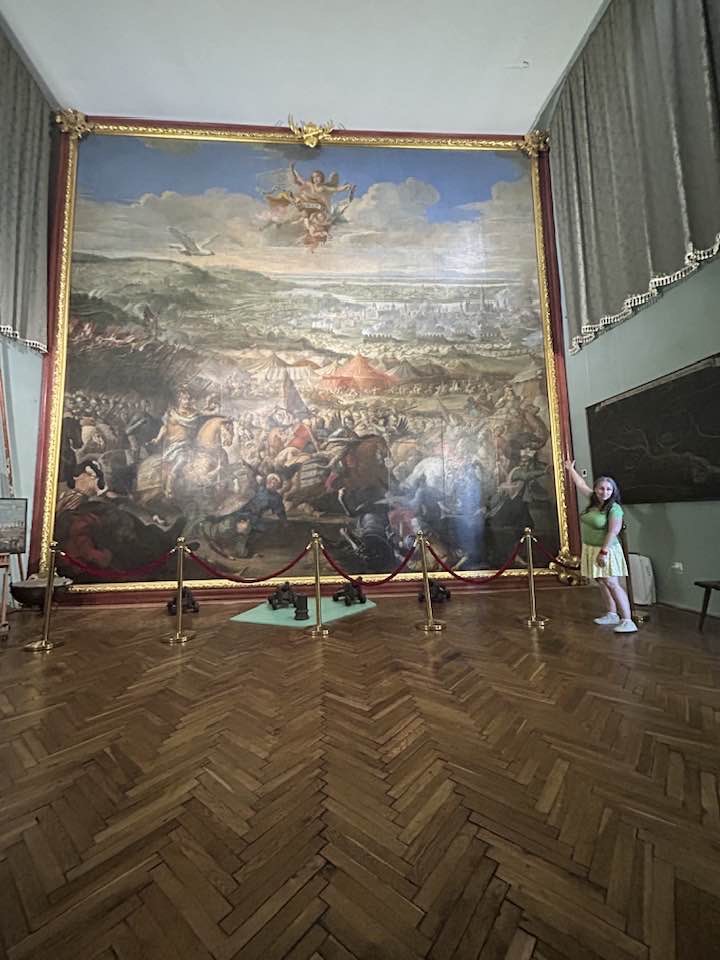

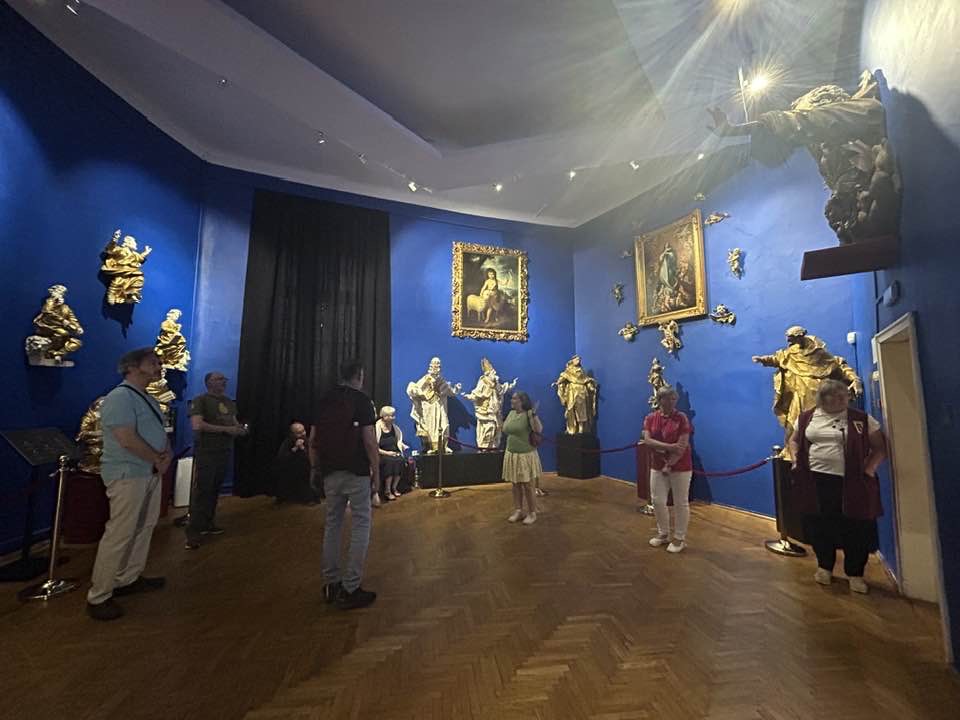
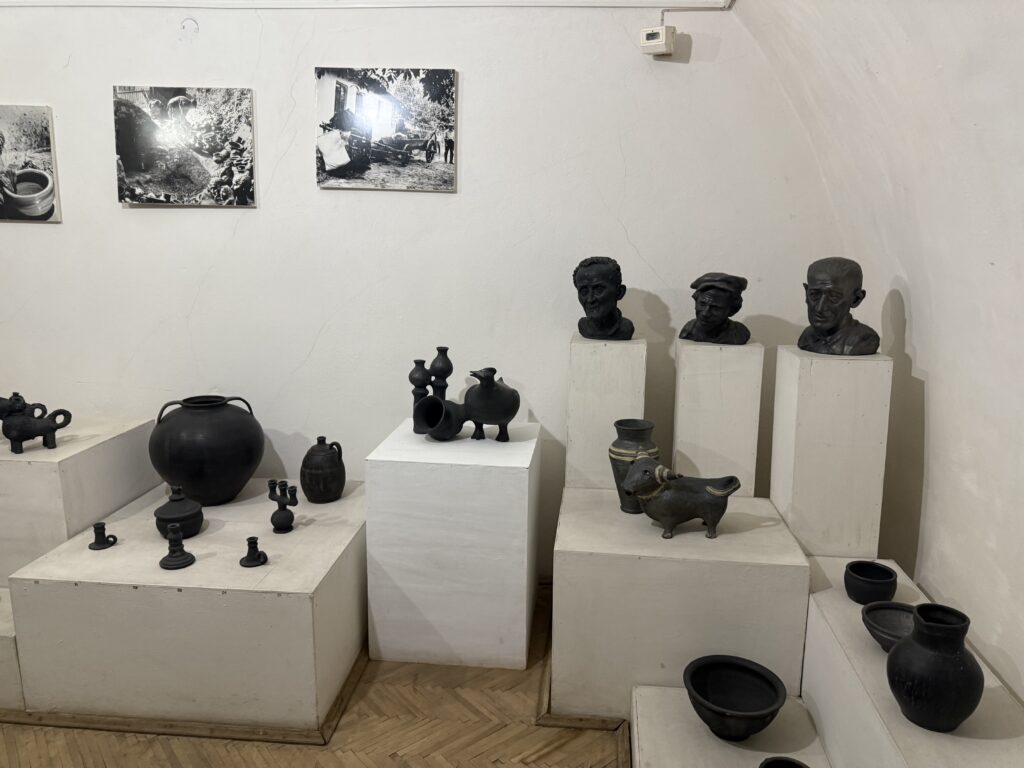
Black ceramics in Havarechchyna (6 July)
From the brochure (adapted):
The village of Havarechchyna is a center of traditional folk craft – black-smoked, “gray”, unwatered, Havaretska ceramics. Anyone who sees Havaretska ceramics for the first time asks the potters if it is painted. Or maybe fired with some special black clay? But in fact, the secret of Gavarech ceramics lies in the firing technique.
The Olesko Castle already introduced us to black ceramics. Our next stop was an actual craftsman in a remote village — no cellular reception, no flushing toilets. We lunched there and we all could buy black ceramics, and create our own pot. However, our pottery would take 2 months to be processed for ‘blackening’ — I’ll pick up my black ceramic thing next year, when I return.
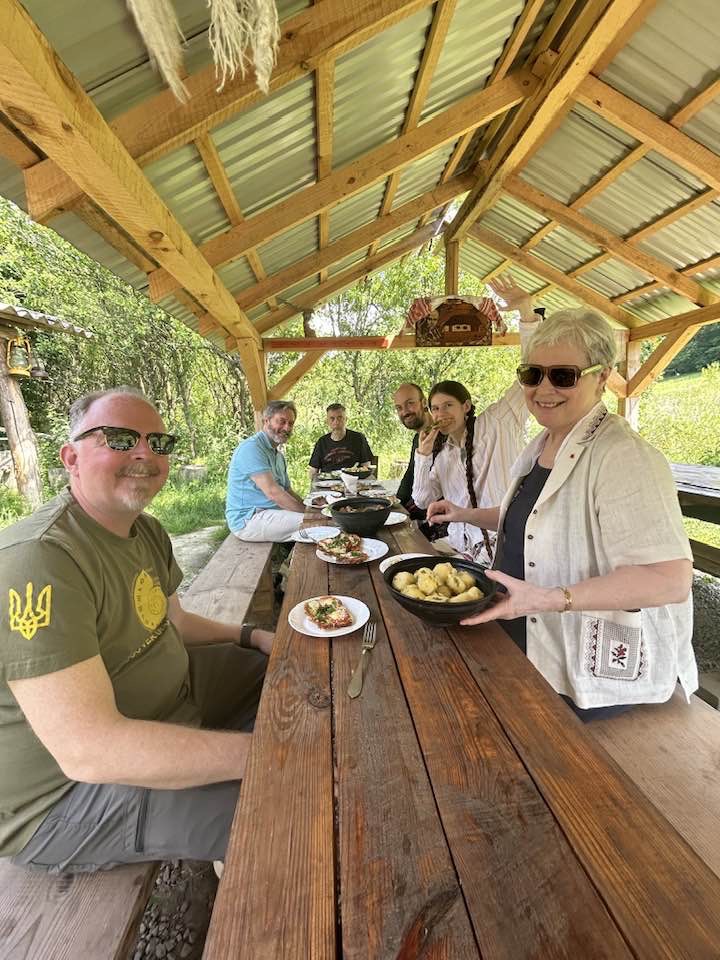
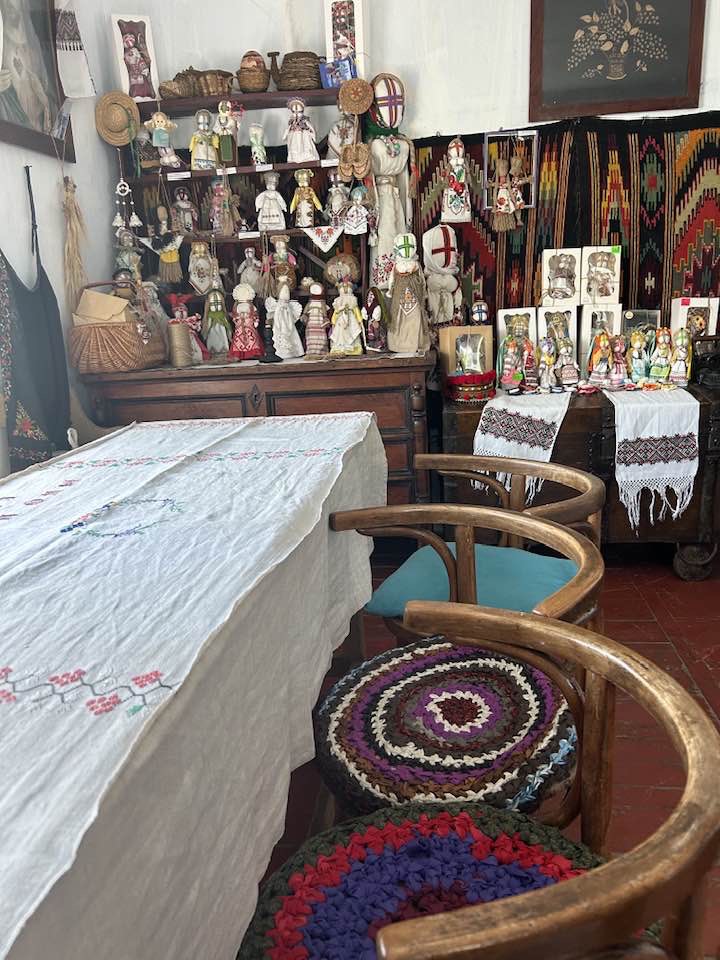
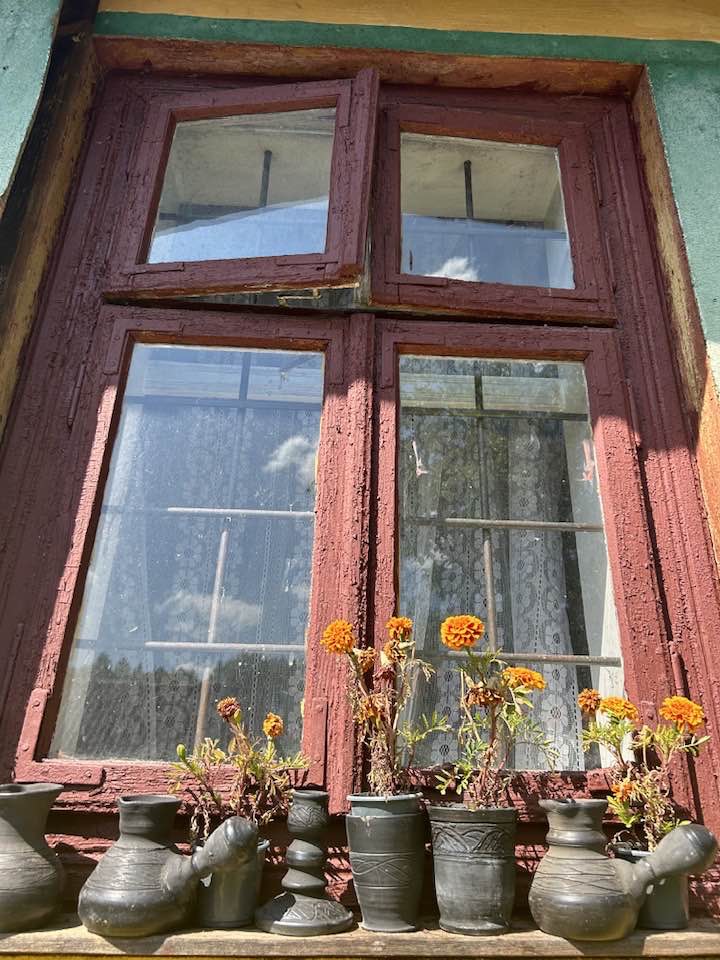
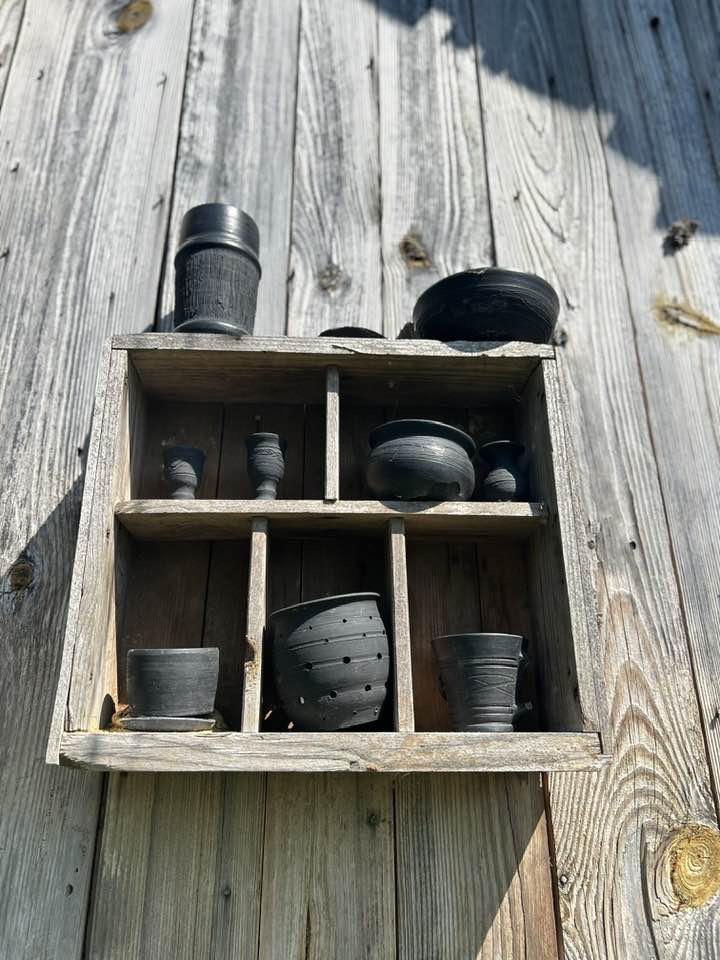

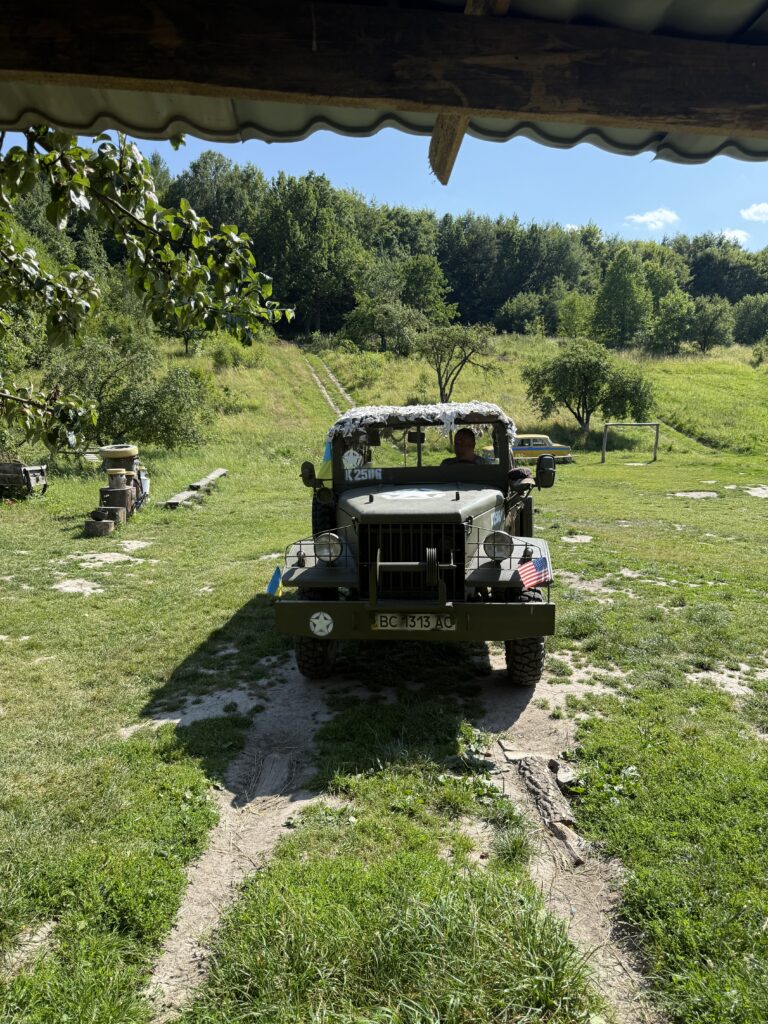
Salt mines of Drohobych (13 July)
From the brochure:
Drohobych is a city in western Ukraine, located 86 kilometers south of the regional capital. It is renowned for its sacred architecture. The unique wooden Church of St. George in Drohobych is inscribed on the UNESCO World Heritage List. Since the 14th century, Drohobych has been known as one of the largest centers of salt production (a visit to the Drohobych Saltworks is highly recommended). In 1422, the city was granted Magdeburg rights, and by the 15th century, it had become a county center.
We first visited very old salt mines and is still operational today. It once produced salt for basically the entirety of Ukraine, but due to increased demand its production currently serves only Lviv oblast. We also got to taste some salt!
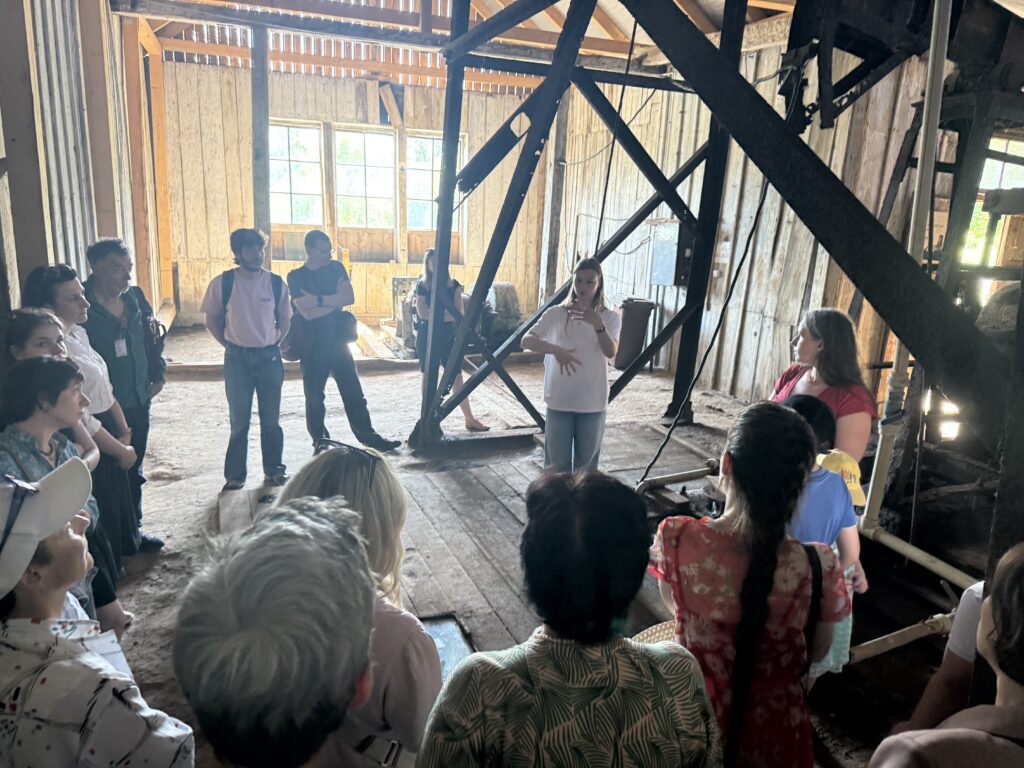

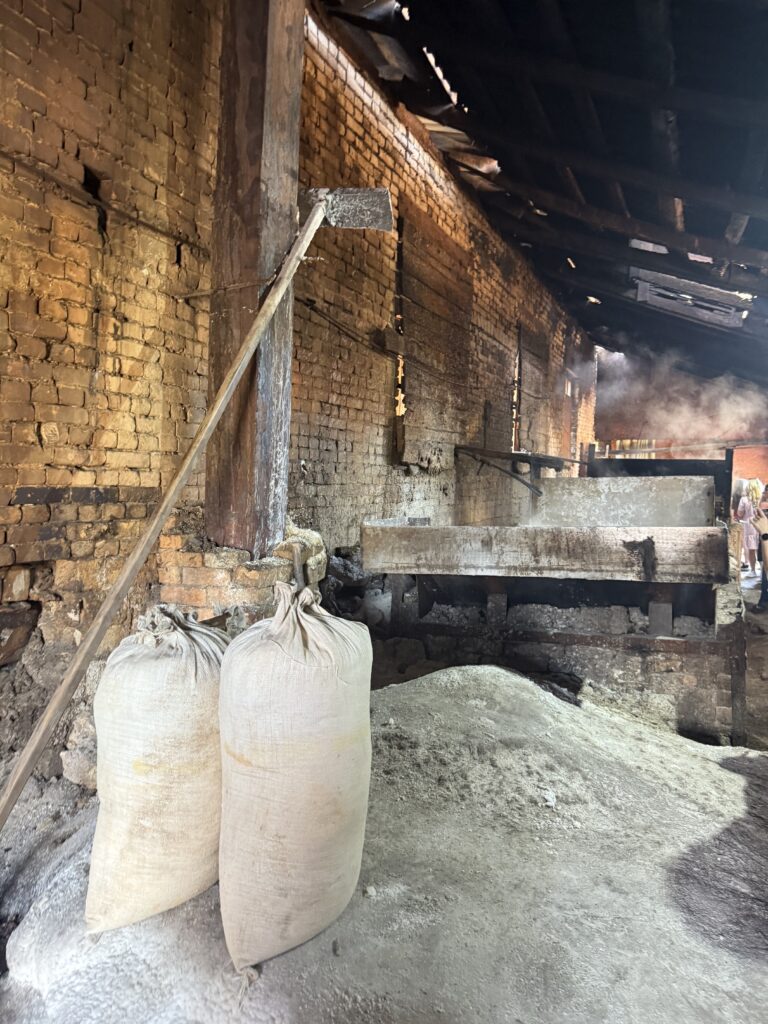
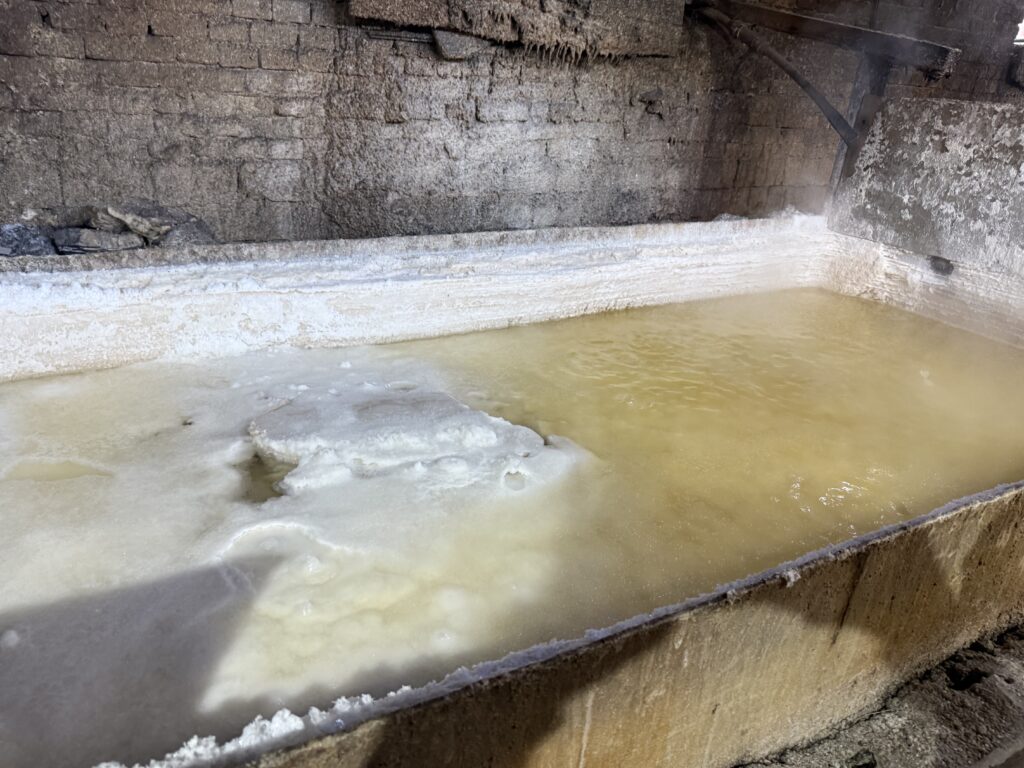
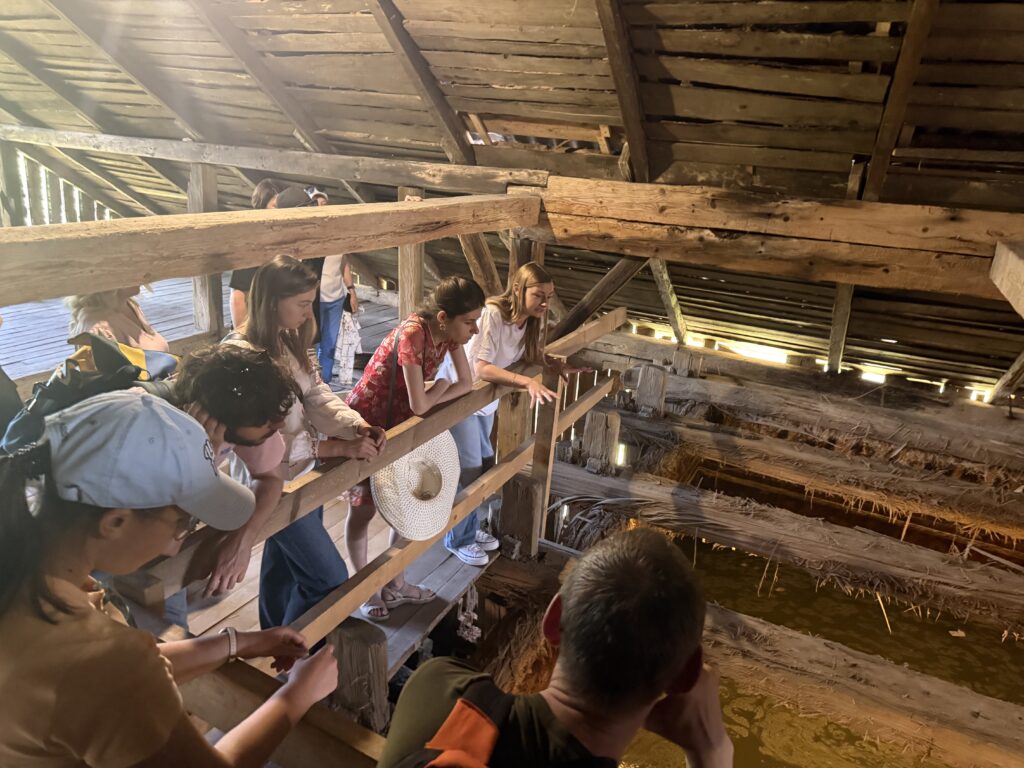
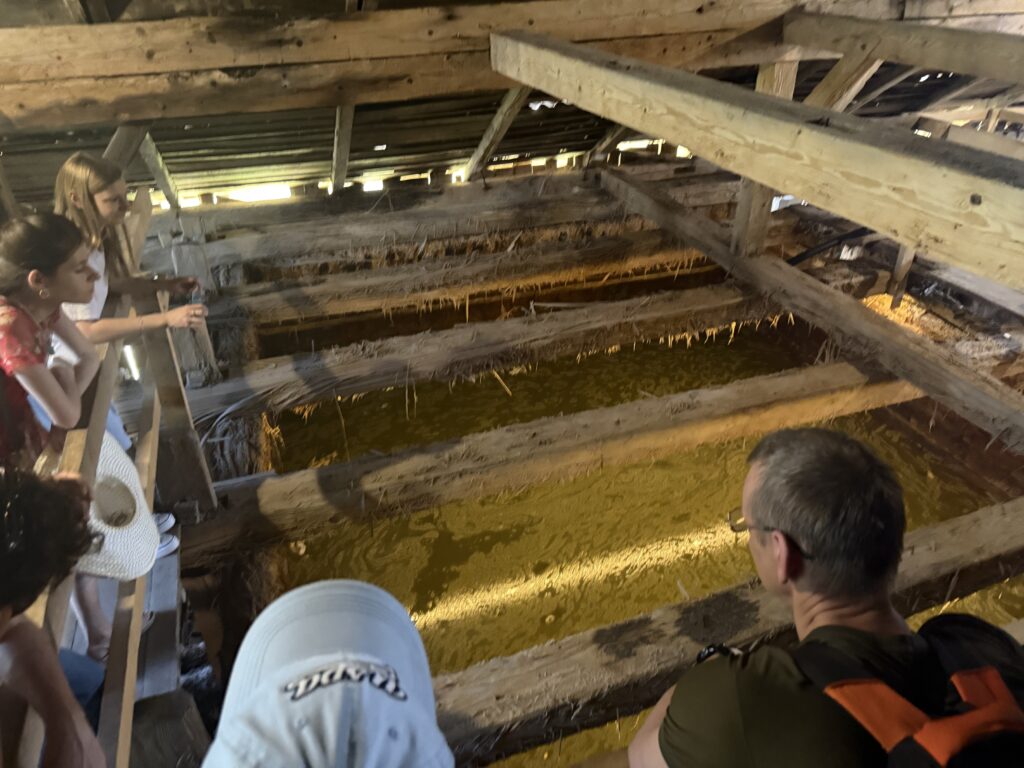
Church of St. George (13 July)
From the brochure:
The Church of St. George was built in the 15th century and acquired its final appearance in 1678. It is renowned for its unique interior murals and its equally remarkable mid-17th-century iconostasis. The church’s interior is decorated with frescoes created under the direction of Stefan the Painter, son of a priest from Medyka. In addition to religious scenes—most notably the Passion of Christ—the decoration includes rich ornamental motifs, predominantly of floral design. In 1678, the bell tower of St. George’s Church was constructed. Though it has undergone multiple restorations, it has retained its original appearance and remains one of the best-preserved examples of 17th-century Galician architecture.
The wooden church is very noticeable — it’s amazing it was preserved for centuries. It’s a UNESCO world heritage site.

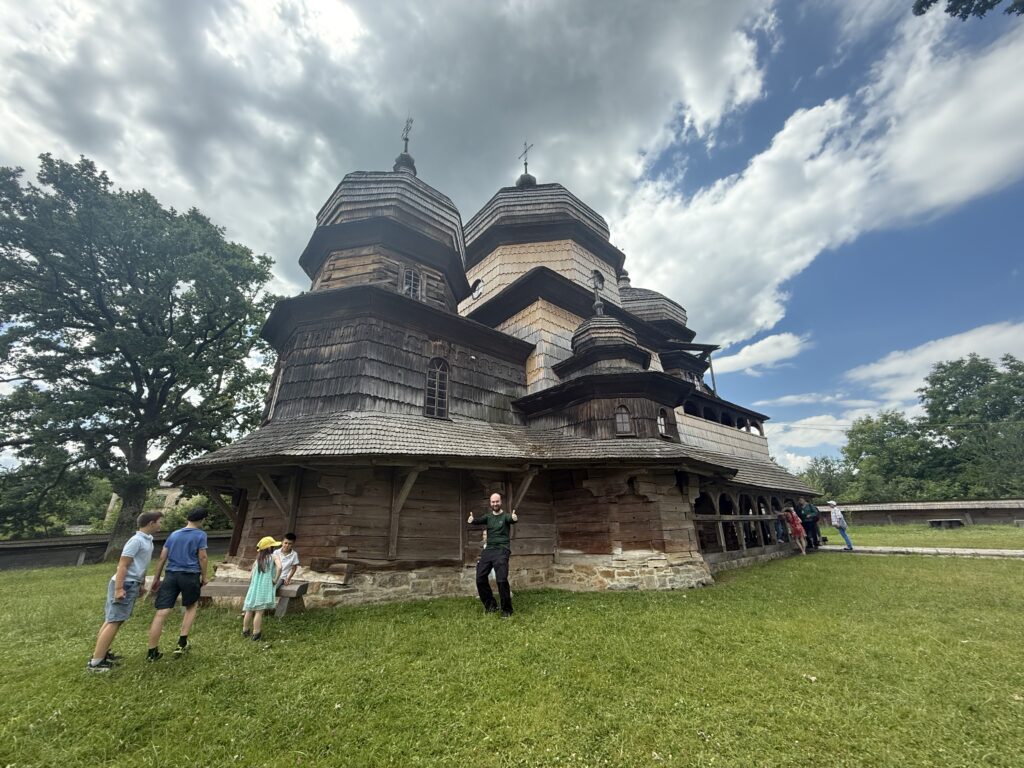
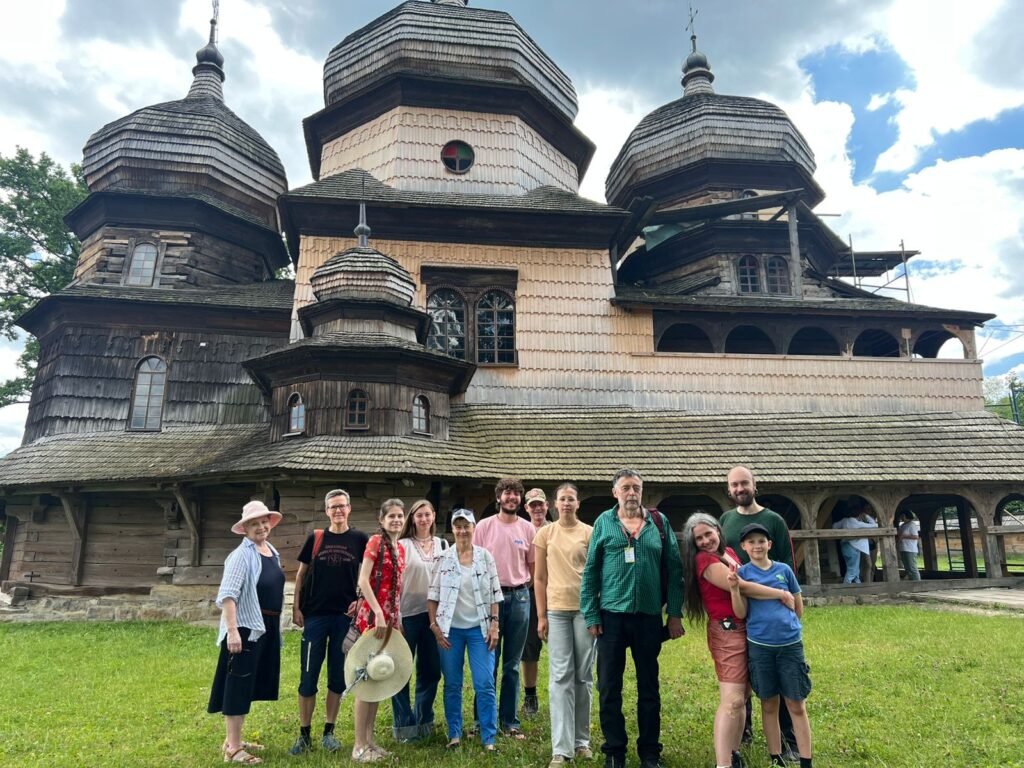
The inside of the church was decorated extensively — including frescos on the very wooden planks itself.
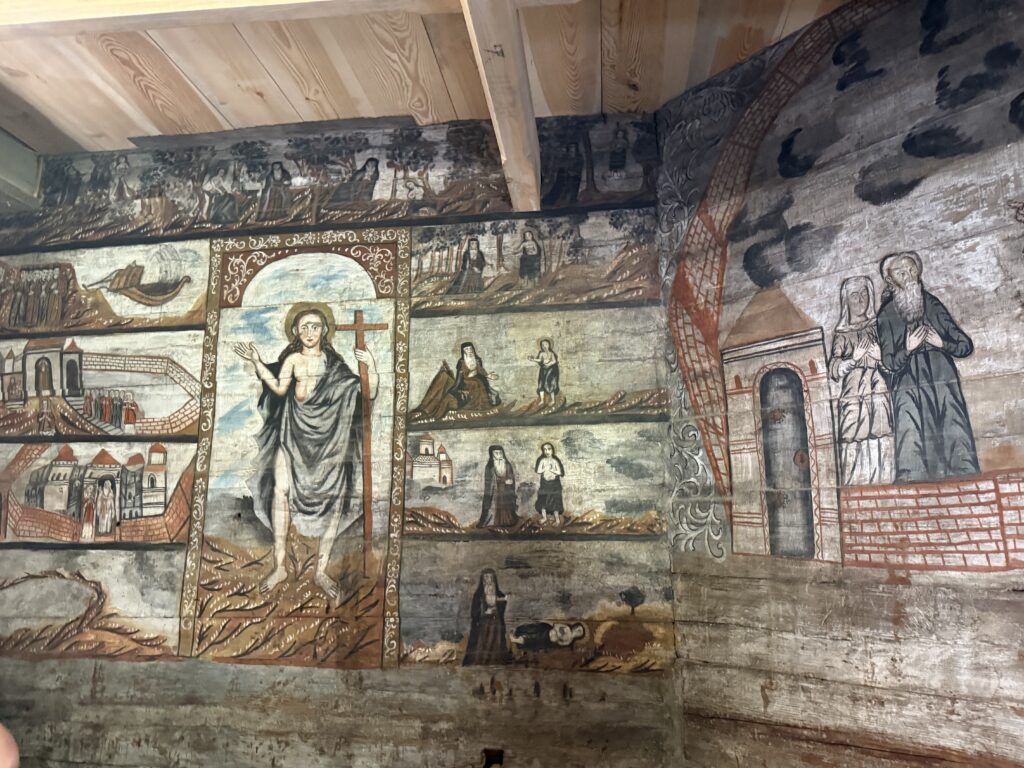
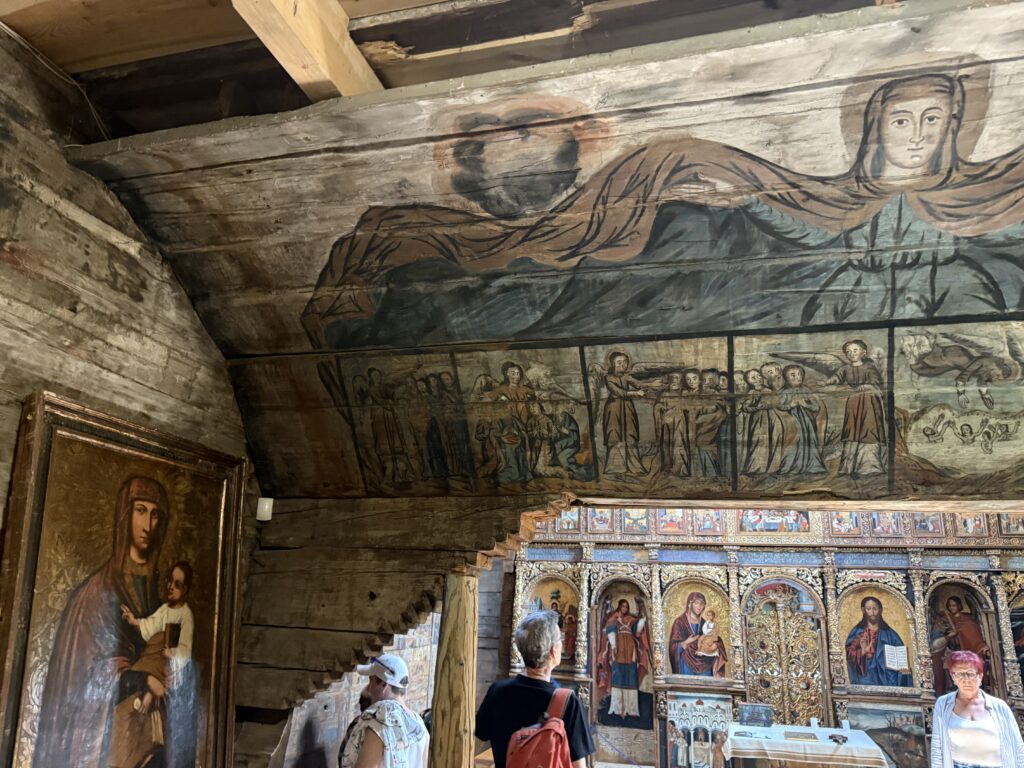


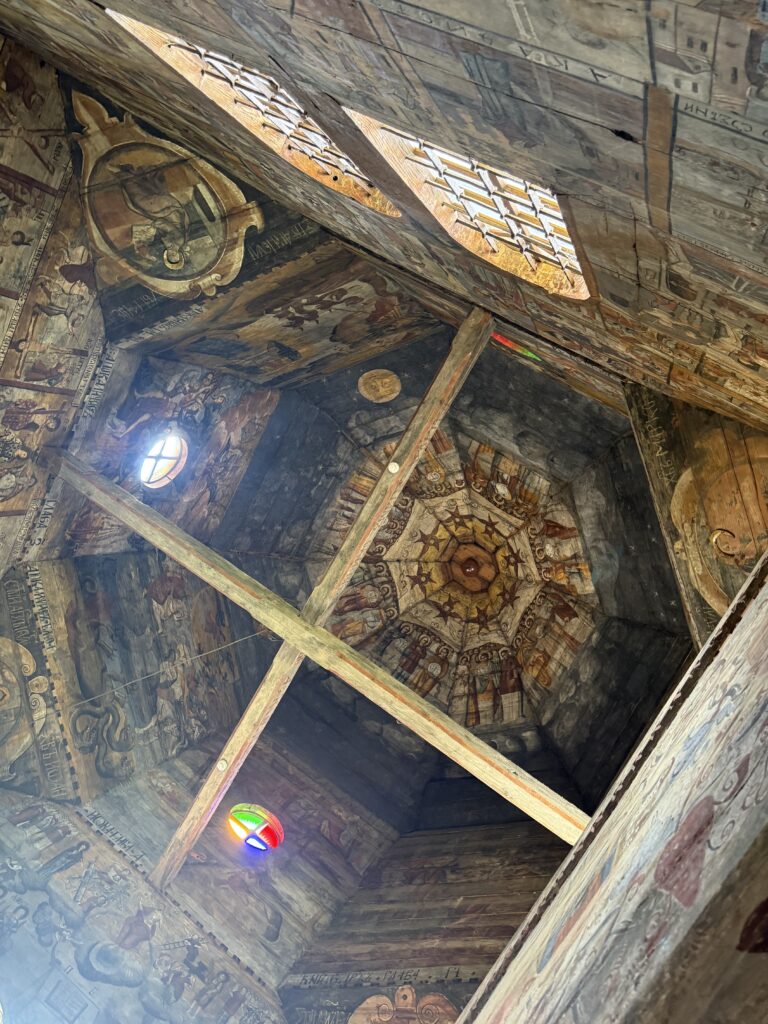
City of Drogobytsj
This town has more than an old salt mine and old church. Because the Bruno Shults museum we were planned to go to next was closed, we explored the city instead.
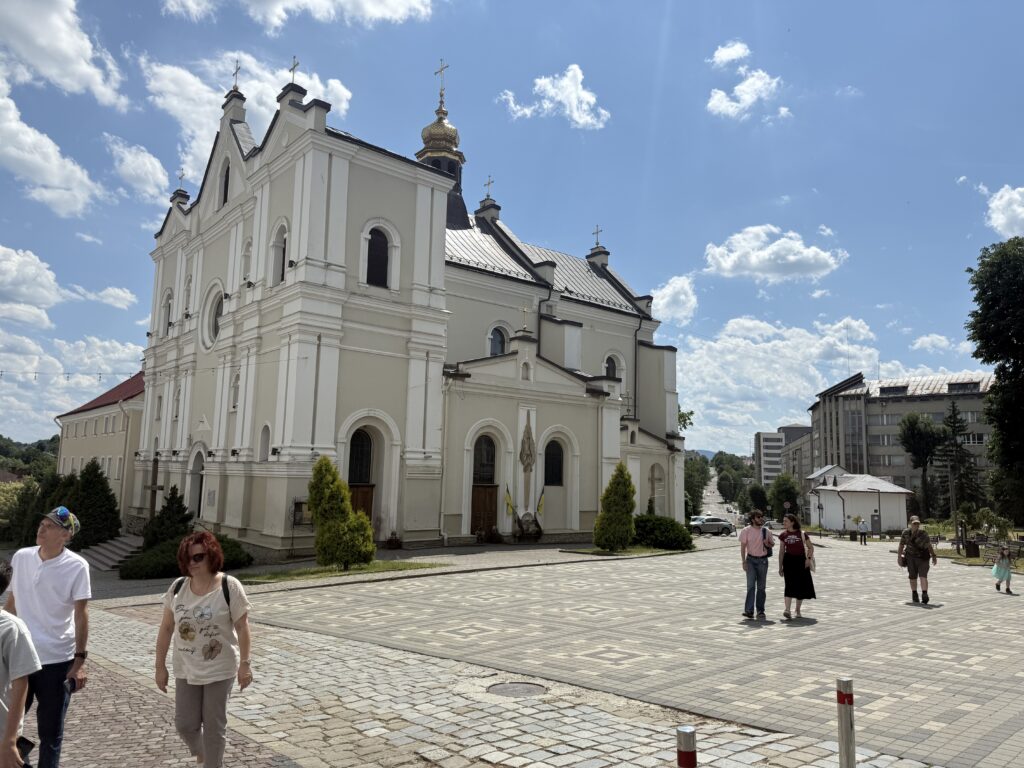

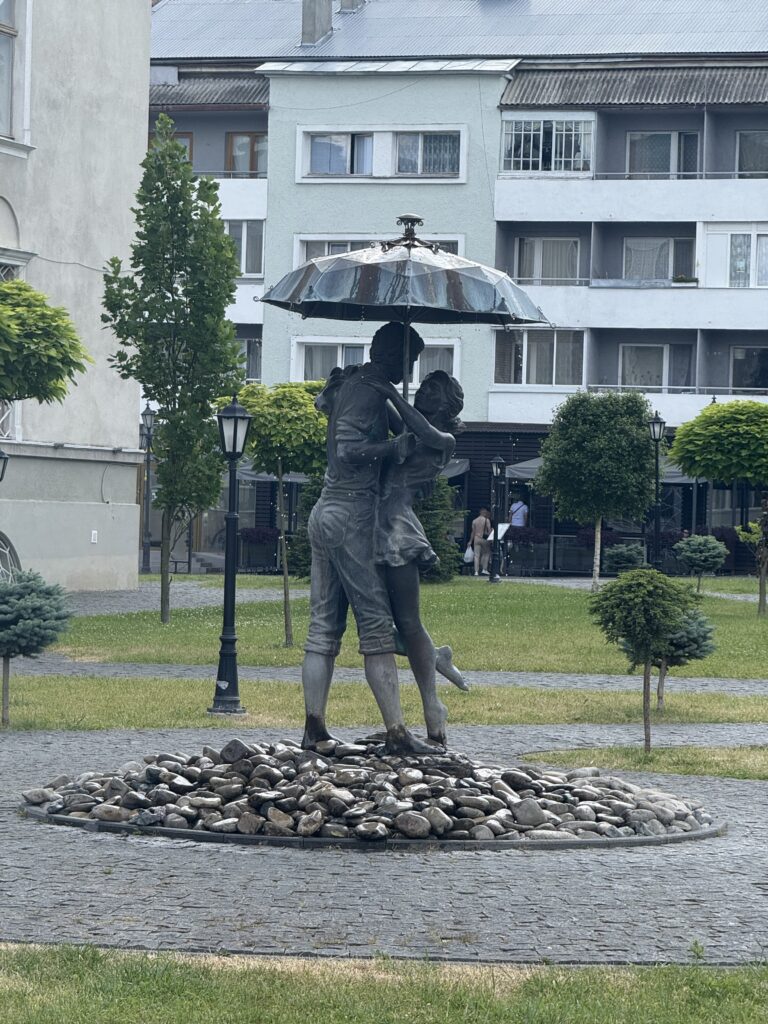
It was so hot — and of course I forgot my sun glasses, suncream and hat. The heat already exhausted me so I was fine with being as lazy as possible. Unfortunately, shadows were rare on this square.

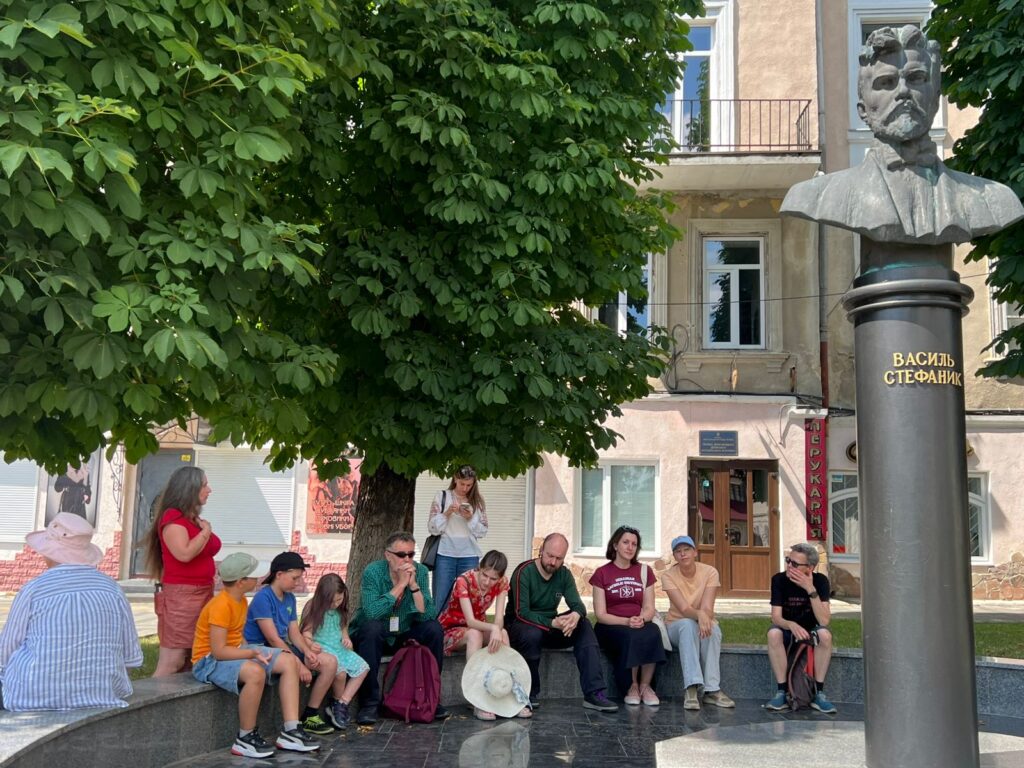
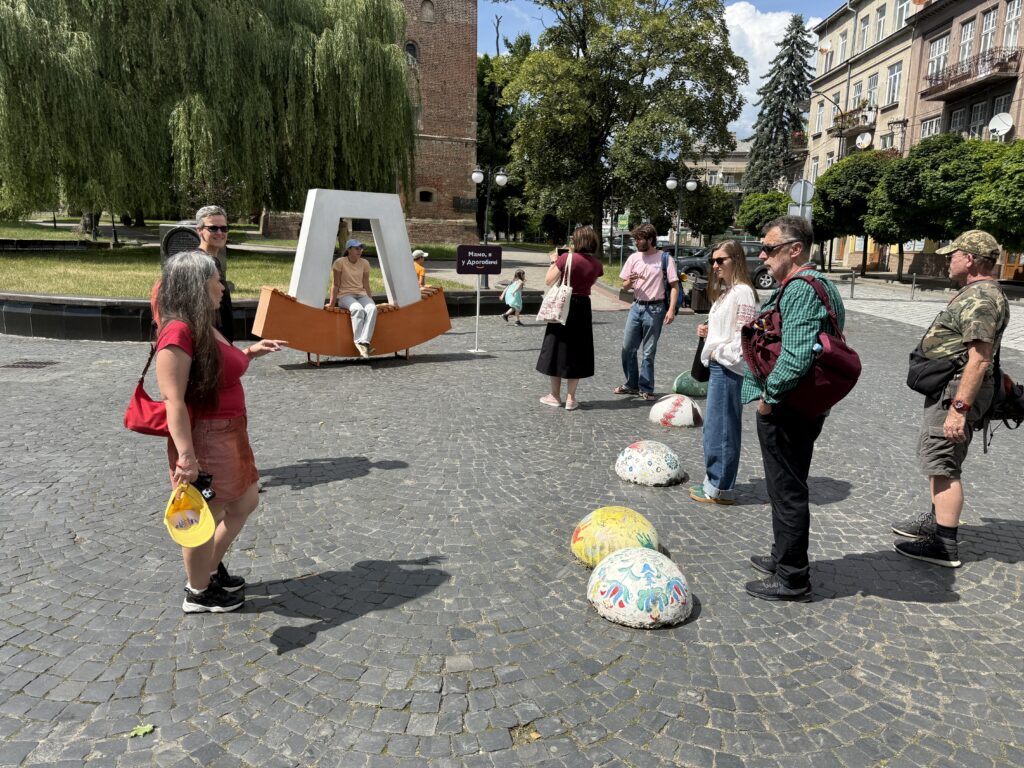
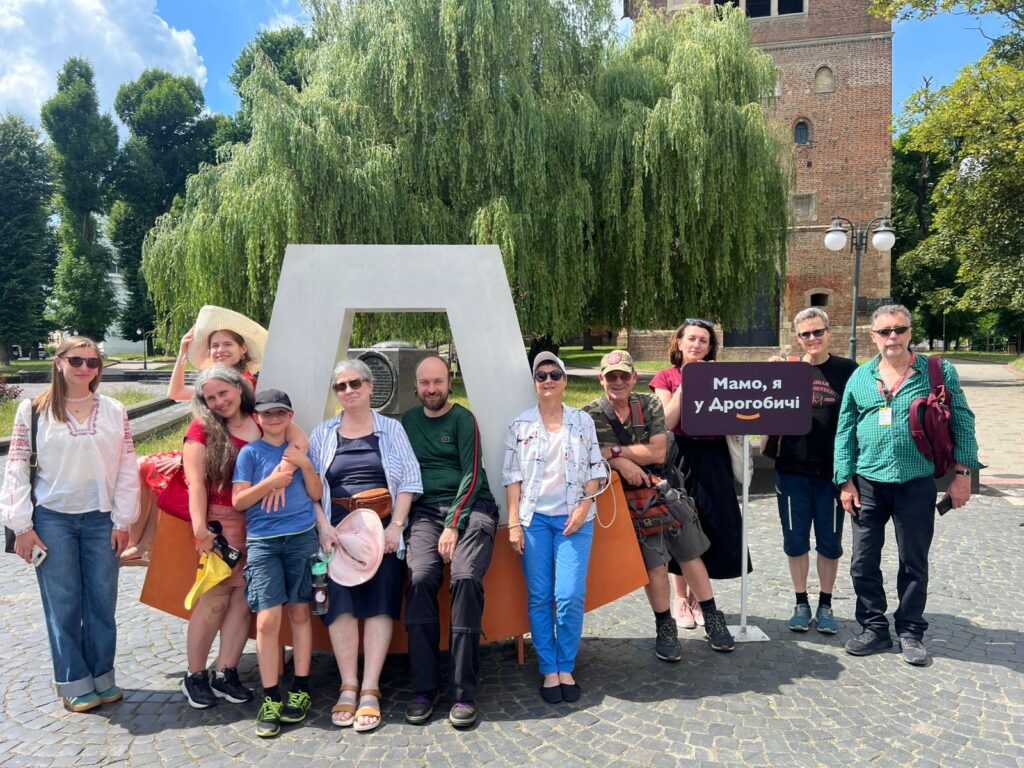
In conclusion
Once again, we see Ukrainians treasuring their past. A castle was reconstructed multiple times. A church restored multiple times. Ancient industries — from salt mines to black ceramics — are still operational. And with well-maintained museums, statues and tours they give their legacy extra purpose and meaning in modern times.
Shout-out to tour guide Ivanka — thanks for all the tours; it was a pleasure to be led by your amazing stories!

